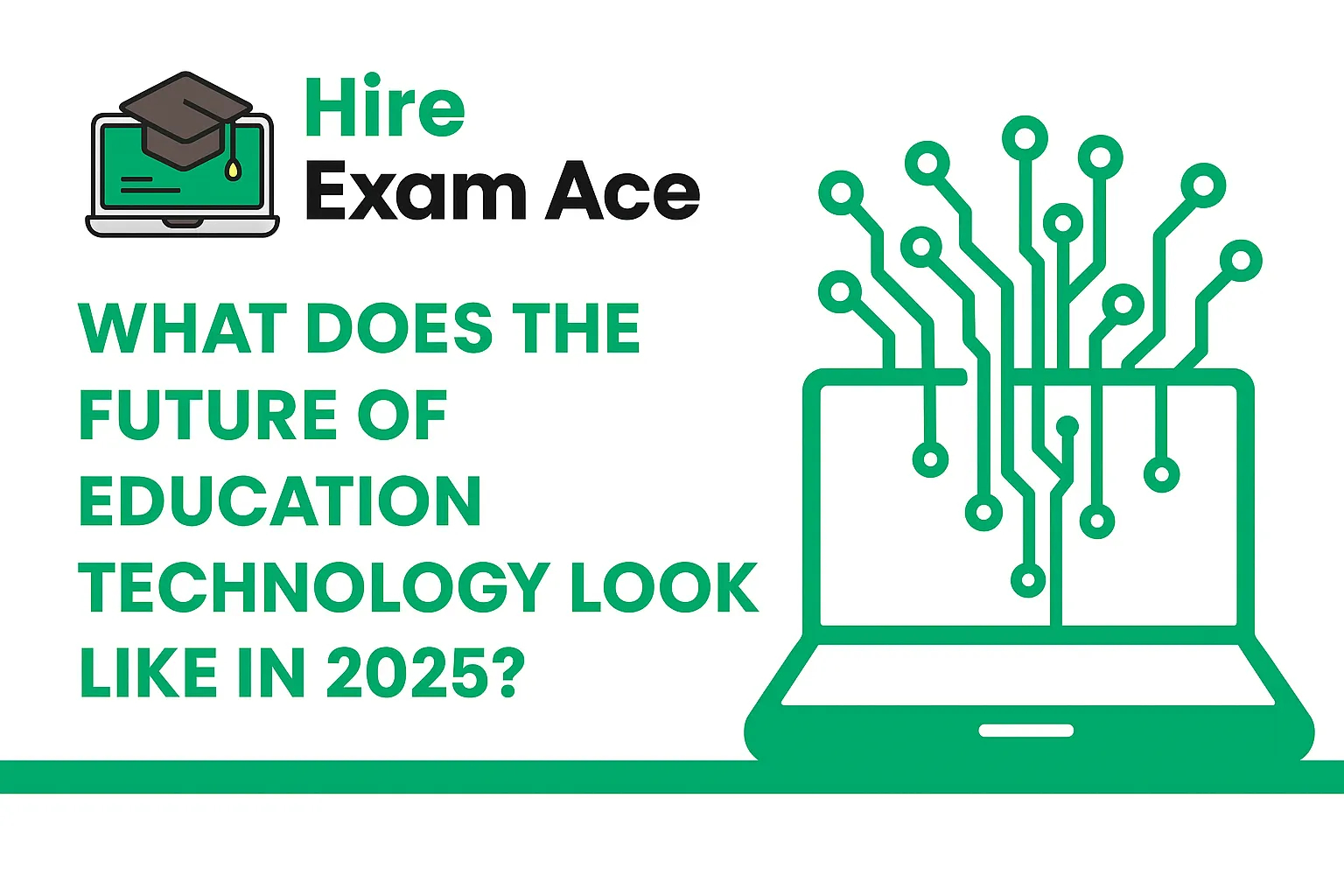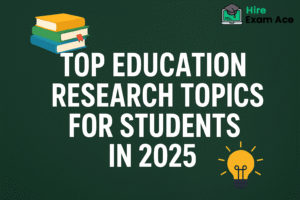What Does The Future Of Educational Technology Look Like In 2025
The world of learning has always seen change but one shift in the year 2025 ranks among the most important breaks in current history. As the use of machines changes how people live, work, and talk together it is also altering how students learn, how teachers work, and how learning places run.
Now in the year 2025 it is quite different because some of the new ways to use the machines such as artificial intelligence, focused learning groups, looking at data, and doing work without people on it have gone from small uses to social uses and changing how the learning of the grail works around the world. As the use of the tools above have become bigger, what has been built, how it is used for learning, and the uses we can see to change above the year 2025 are looked at.
The Evolution of Education Technology: How We Reached 2025
To find out where education is today, let us look back to see how it got here. For many years, most classrooms depended on blackboard, books, and teacher talk. Old tools like projectors, computer labs, and media did not advance learning but they moved us lightly toward current digital learning. Then, the Internet gave us online classes, virtual learning, and interactive teaching programs to help us further go digital.
Yet, what changed us most was the event of those years when all sorts of learning stopped suddenly between 2020-2024. Students and schools started using learning management systems, digital exams, and video tools. Students went from having computer time to all digital all the time. The year 2025 saw us bring computers to life with intelligent systems, data, and automatic functions which made a map to us a sophisticated, rapid, individual learning system in the face of our new digital learning age.
AI-Powered Learning: The Most Dominant Trend of 2025
AI is at the very core of what lies ahead for education. By 2025, there won’t be any options to use AI systems; they will be tools that provide personalized routes to learn. Smart tutoring systems watch what students do, find the anxieties they have, and change how hard things are in real-time. These systems bring alive a learning environment that resembles learning just with one person. This allows students to work more on things they are not good at and move faster on the areas which they are, in effect, already good at.
AI also provides scholars with help by automating busywork like grading, managing the learner’s hours, and performance reporting. Forecasting models look at the data from the past in order to find the first signs of academic difficulty so that schools can act early. For the trainer, this means more time on creating and on respecting. For the learners, this means knowing they can always ask for help that is special to them.
Additionally, AI might become very important for ways people who can learn also can learn in ways some can’t. Tools such as real-time captioning, speech-to-text aide, and adaptable reading help make it so all learners, no matter what is the reason for their difference, have a seat at the table of learning. As AI keeps making moves, it will make education more special for each person, work faster, and make it so learning healthy and worthwhile can come to all.
Immersive Learning: VR, AR, and Mixed Reality in Classrooms
In 2025, immersive learning will become key in real skills-based education. Virtual reality and augmented reality now let kids learn by doing in place of just reading. Kids in science can do fake lab work, in place of labs; med students can lunch small spots in fake settings; bio students can learn about big items using digital images. These learning tools make learning more each time you use it, and learners less usually have a real way for practice.
Mixed reality settings make learning even more by mixing what’s real with what is masked. Learners can observe close-up, the past by assuming it via play around old places; learners can do geographical lessons on map areas by looking at sensor fake terrains. These trips make the job more fun and more indelible. Instead of feeling that you’re learning with schoolwork, VR and AR lets the dirty and clean people find out how to learn tells and understand viruses to erase the plural of how it teaches and nothing remains.
Data-Driven Decision Making in Schools
Data analytics is one of the most persuasive forces in current education. Institutions in 2025 use sophisticated data tools to measure student engagement, track academic performance, and assess behavioral patterns. Predictive analytics allow educators to classify high-risk students early, develop targeted intercessions, and provide customized academic support, an approach that also discourages shortcuts like trying to pay someone to take my HESI exam, since personalized help makes honest development more realizable.
Administrative heads take advantage of data systems as an easy way to look at teaching skill, how teachers use materials, and planned spelling out. Live dashboards are a great way to help teachers and students to see how they are learning and get the grades, and the way they go about knowing. Such tools can not only bring better results, but they help show what is easy for both sides. But security of private data is a big concern for schools, and thus, firms building data analysis tools must develop a tight code of ethics so no private information is shared.
Rise of Hybrid and Remote Learning Models
Hybrid learning has now become the way to teach in 2025. Instead of having to pick between old style classes and the digital world, schools mix the two. Students will go to in-person classes for group and real activities, but will do the other stuff online. This new way of teaching makes it more flexible, open to those who need it, and for anyone. Remote learning tools have grown a lot. Fancy video places, smart whiteouts, textbooks that are on computers, and simulated breakout rooms help make remote learning fun. People who are in a place where technology is slow, who cannot move, or do not have many resources can use tools to learn. The hybrid model permits schools to meet many requirements and keep doing the work, even when there are difficulties.
EdTech for Skill-Based and Career-Focused Learning
Modern education demands more than academic knowledge; it requires practical, real-world skills. In 2025, EdTech platforms deliver micro-credentials, short certification programs, and skill-based learning segments tailored to industry requirements. Students use AI-based tools to discover profession pathways, analyze job market trends, and select courses aligned with their goals.
Professional learning platforms use VR and simulation tools to deliver training for careers in engineering, healthcare, aviation, and technical trades. Universities collaborate with industries to design programs that equip learners with current, job-ready skills. These tools guarantee students remain competitive in a continuously developing economy. Attempting shortcuts, such as trying to hire someone to take my exam, challenges the rising prominence on real skill development, highlighting why truthfulness remains central in these new learning models.
Gamification and Engagement-Based Learning Tools
Gamification has shown to be a useful way to motivate students, promote high levels of participation and improve student learning results. School games offer students challenges, incentives, badges and activities that make writing fun. Gamified math drills, science experiments, and tests of word memorization make it easy for students to understand complex ideas through hands-on participation.
By 2025, gamification resources are advanced and use information. Sites increase or reduce difficulty based on how well a student performs to keep every student challenged. Teachers apply gamification tools to observe students’ passion for studying, have data on where they are in their work, and make results fit their personal approach to learning. Gamification turns traditional classrooms into spaces that are more high-energy, fun and satisfying when learning.
Automation and Smart Classrooms
Automation has made it easier for schools to run and teach at all levels. Tech in rooms has internet and devices so rooms can change with the students and how they learn best. Absent student watches, electric books, and computers that can write by themselves take away part of teachers’ work and make things run better.
Smart tech in the rooms can change the lights, the temperature, or the furniture and all this helps students learn better. Teaching staff can get work out, see if students are on with the work or not, and see how students are doing. Teaching teams and their students can spend more time doing work that really helps when work happens automatically.
All this tech helps move all the schools and places where work gets done – to systems that use all of the space the least and Save trees!
Read More For Informational Blog: How Bonus Questions Help Students Stay Motivated and Involved in Exams
Blockchain and Secure Learning Systems
Blockchain technology brought great help to safety and clear high school. Safe records in computer chains are in a high school before it can be changed or faked in any way. Web companies can check your high school paper in a split second, helping every person work faster and earn other people’s trust.
Online testing (tests done online and electronic tests) with chains stops cheating by making the test taker real and by locking the testing stuff away. Your high school paper, college degree, and real high school credential are all safe and safe for a lifetime so students never lose them. Something we always worry about, computer safety in a high school, is not as an issue as you might think because chains are here to keep high school safe for a long time and stop something from making its way into the hacker or bad hacker world.
Accessibility and Inclusivity Through EdTech
Inclusivity has become an important rule in today’s education. In 2025, the EdTech tools act as a bridge to overcoming the hurdles that come with learning disability, physical handicaps or the language differences. AI-powered speech readers, everlasting interpreters, digital braille screens and tailor-made learning parts make sure there’s a level playing field for all students.
These help schools deal with various needs and help promote education around the world. Less-populated and untapped people are offered access to online content using low-bandwidth, offline and low-cost supply and demand support loans. Accessibility is also still the heart of trying to make fair and welcoming education reform systems deal with it.
Challenges and Concerns Shaping the Future
Even with huge progress many problems still remain. As schools continue to gather student data, privacy worries grow. Schools must weigh data use and rules for good behavior. Criminals use the Internet to attack schools more so than ever before.
Another big worry is too much screen time where young people can end up with problems with mental health and mental growth. Learning through screens versus getting up and doing good in using hands is very important. Overuse of tools like computers can make people think in simple ways, and it can make it harder to be with other people in the right way. Teachers around the world are ready now to learn how to do a better job with the use of digital tools.
Expert Predictions: How EdTech Will Shape Education Beyond 2025
Experts see a future of more AI-human teamwork. Learners will study together in Internet-connected virtual rooms, near-VR and near-AI equipment, and talk with mates all over the world. Learners will get closer to learning in a way that is theirs and find it easy when learners learn at an individual level, in a way that is there, and in what they do best.
Most much unneeded work will be dealt with by robots, so teachers can show how they help. Learners will learn work skills more than now as it will be done in simulators, digital schools, and today’s working world. The work could also make an independent educational world in which education and training work in, and without, real places.
Also Read This Blog: Top Education Research Topics for Students in 2025
Conclusion: What 2025 Means for Students, Educators, and Institutions
2025 marks a big change in how education tech will grow. With AI helping us make things just right for each person to use, learning that feels real, and decisions based on facts, EdTech keeps making a better, more flexible, more fair and smarter way for people to learn. All of these new things make it so anyone can learn on their own, make work easier for teachers, and help schools give smarter, high quality, really good for the time training.
As tech keeps growing, learning will stay a changing and ever-moving thing that keeps changing so it can be good for a world that moves way faster. The new stuff from 2025 makes a smarter, linked, and easier to get worldwide smart learning space that is changing the way people learn, give what they learn feel, and how they get to learn it.










